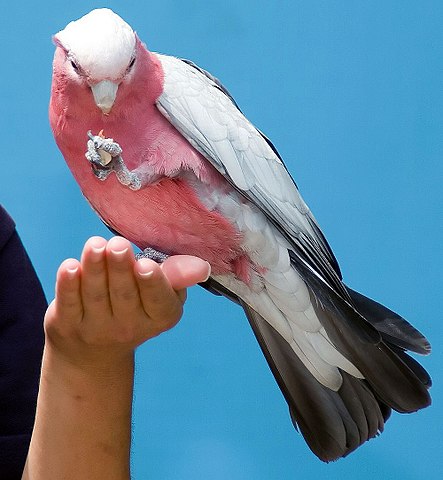Parrots have the potential to lead very long lives if fed a proper diet. Current research shows a pelleted diet meets the nutritional needs of hookbills.
A well-rounded diet that offers variety would also include fresh fruits and vegetables, pasta, rice, whole grain bread, raisins, hot peppers, and occasional lean meat. (chicken, turkey)
For most parrots, seeds and nuts should be given sparingly and only as treats, as they are high in fat. This does not include some of the large Macaws.
Birds are social creatures and should be included in your mealtime. They can eat whatever you are eating if it’s healthy. Sharing your meal with them will help to increase their bond with you.
Never allow your bird to ingest avocado, chocolate, alcohol, houseplants, caffeine, sugar, salt, fat, or tobacco smoke.
Fresh water and clean dished should be provided daily. Birds love to play in their water, dip their food and dive into their bowls, especially if the vacuum is running!
It has been noted that parrots have the intelligence of a 5 yr old child and the maturity of a 2 yr old child.
There are many stimulating and interactive toys on the market that will keep your bird entertained. But if you are creative, safe toys can be offered from things around the house. Cut 2x4s on a chain will always be chewed, but some more creative offerings are wooden spoons, little boxes of raisins, a box with walnut inside, stainless steel nuts & bolts, popsicle sticks, wooden clothes pins and cardboard egg cartons with a treat inside.
To always be in control of your bird, the commands of UP and DOWN should be taught early and used often. For your safety, your bird should always be carried on your hand, not your forearm or shoulder.

Taking your bird to a neutral room or to a play perch, stand, or tree to exercise will help to broaden his acceptance of new situations.
Household hazards that can injure or kill your bird are over-heated nonstick pans, scented candles, aerosols like air fresheners, hair sprays and cleaning products, and unsupervised children, dogs, cats, and other birds.
It is not unheard of for a person to take their bird outside with unclipped wings, and, having been startled, watch the bird simply fly away. Should you choose to clip your bird’s wings, a standard clip would be the first 6 or 7 primaries. If you are unfamiliar with this procedure, have your vet do it, or have him train you to do it.
Your most important tool is your avian vets’ phone number. But an avian “first aid kit” is invaluable to have in case of overnight and weekend emergencies.
What you stock that kit with depends on what you are comfortable treating. You and your vet have to decide that. Some basics include towels, hemostats, scissors, quick-stop, q-tips, bottled water, bandages, and vet wrap.
